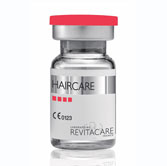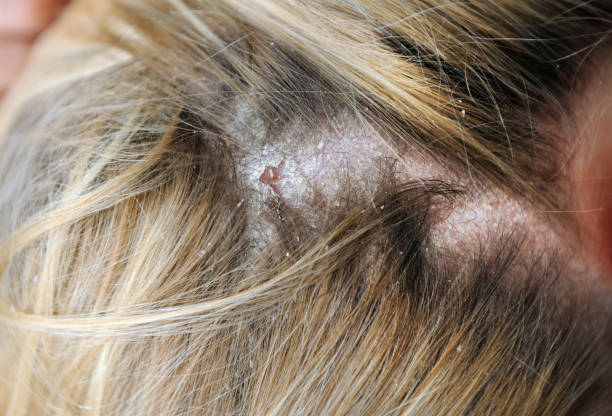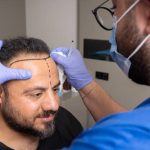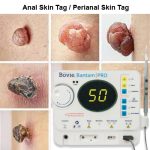July 9, 2023 By simonw Comments are Off alopecia totalis, alopecia universalis, scarring
Table of Contents
Scalp Micropigmentation for Scarring Alopecia: A Game-changer
Introduction
Every day, countless individuals wrestle with their reflection in the mirror, confronting the challenging reality of hair loss or visible scarring on their scalp. Limited remedies to these afflictions existed for a long time, often proving expensive or ineffective. Now, a revolutionary solution, scalp micropigmentation (SMP), is transforming lives, offering an effective method that addresses scarring alopecia with impressive results.
SMP, an innovative technique, exists at the crossroads of art and science. This non-surgical, semi-permanent cosmetic treatment uses minute pigment deposits to replicate a hair follicle’s look, resulting in a fuller head of hair or effectively camouflaging scars.
Scarring Alopecia
Known in medical terminology as cicatricial alopecia, scarring alopecia is a condition causing permanent damage to the hair follicles and, consequently, irreversible hair loss. Under normal circumstances, the hair follicles on the scalp undergo a cycle of growth, transition, and rest before the hair eventually sheds and the cycle recommences. However, in scarring alopecia, inflammatory processes destroy the hair follicles, which are subsequently replaced by scar tissue, leading to long-lasting hair loss in those areas.
Scarring alopecia presents in various forms, such as lichen planopilaris, frontal fibrosing alopecia, and central centrifugal cicatricial alopecia, to name a few. These conditions exhibit different symptoms, progression rates, and specific inflammatory processes. The precise origin of scarring alopecia remains unclear, but it is believed to be linked to an abnormal immune system reaction. Although anyone can be affected by scarring alopecia, some forms are more prevalent among certain genders, age groups, or ethnicities.
In terms of treatment, the main objectives for managing scarring alopecia include symptom control, halting the condition’s progression, and preventing additional hair loss. Regrettably, hair that has already been lost due to scarring alopecia typically cannot be regrown. That said, methods like scalp micropigmentation offer the potential to enhance the aesthetic appearance of the scalp.
Scalp Micropigmentation as a Solution for Alopecia
SMP can be an immensely beneficial solution for individuals grappling with alopecia, a condition characterized by patchy or total hair loss. Unlike wigs or hair transplant surgeries, SMP provides a consistent, maintenance-free result that doesn’t interrupt one’s daily routine. The transformative impact of this treatment is immediate and life-altering.
Alopecia is a complex category of conditions encompassing alopecia areata, totalis, and universalis, each causing different hair loss types and levels. The versatility of SMP to adapt to each type is an integral part of its efficacy. SMP can blend into the surrounding hair in cases of patchy hair loss, creating an illusion of density. It can create a convincingly natural-looking hairline and scalp coverage for total hair loss.
Addressing Scarring with Scalp Micropigmentation
Scarring on the scalp can arise from various causes, including surgical scars, accident-related trauma, or skin conditions. The visibility of these scars often leads to self-consciousness, and traditional methods of scar reduction may not entirely conceal their appearance. SMP excels in these situations, camouflaging scars into the scalp’s texture and tone using a mix of artistic skill and technical precision. The result is a remarkably natural, scar-free appearance.
Personalizing Scalp Micropigmentation
SMP is not a one-size-fits-all solution, which is a key to its success. Professional SMP practitioners tailor the treatment to each individual, considering factors like natural hair colour, skin tone, the extent of hair loss, and the desired outcome. They meticulously plan the pigment placement to mimic natural hair growth patterns, ensuring the result is seamless and virtually undetectable.
Emotional Relief through Scalp Micropigmentation
Scalp Micropigmentation offers not just physical but emotional relief as well. The toll of hair loss and visible scarring can significantly impact mental health, often leading to anxiety, depression, and social isolation. SMP can significantly improve a person’s self-esteem and quality of life by restoring the appearance of a full head of hair or a scar-free scalp. It empowers individuals to reclaim their image and live life on their terms.
The Non-invasive Nature of Scalp Micropigmentation
One of the advantages of SMP is its non-invasive nature. Unlike hair transplants that require surgery, potentially leading to discomfort, extended recovery periods, and potential scarring, SMP involves no such complications. Performed under local anesthesia, the procedure is virtually painless, with sessions typically lasting between two and four hours, depending on the extent of hair loss or scarring.
Is Scalp Micropigmentation Permanent?
Scalp Micropigmentation is considered semi-permanent. Over time, the pigments may fade, requiring touch-up sessions to maintain their appearance. However, this gradual fading can also be seen as a benefit, allowing the individual to adjust their look over time as their tastes or styles evolve.
Scalp Micropigmentation: A Cost-Effective Solution
In terms of cost-effectiveness, SMP stands out. Hair transplants can cost several thousands of dollars, and their success is not guaranteed. Wigs or hairpieces require constant maintenance and periodic replacement. In contrast, the cost of SMP treatments is generally lower, and the results are reliable and low-maintenance.
Selecting an SMP Provider
It’s critical to remember that not all SMP providers offer the same quality of service. The practitioner’s expertise, skills, and understanding of the nuances of pigment application and skin undertones play a significant role in the procedure’s success. Therefore, doing diligent research, reading reviews, and viewing before-and-after photos when selecting an SMP provider is crucial.
Q & A
How can SMP benefit individuals suffering from alopecia?
SMP can provide a consistent, maintenance-free solution for those struggling with alopecia. It can create an illusion of density for patchy hair loss or a natural-looking hairline and scalp coverage for total hair loss.
How does SMP help camouflage scars on the scalp?
SMP uses a blend of artistic skill and technical precision to camouflage scars into the texture and tone of the scalp, resulting in a remarkably natural and scar-free appearance.
Is SMP a one-size-fits-all solution?
No, SMP is not a one-size-fits-all solution. Treatment is tailored to each individual, considering factors like natural hair colour, skin tone, the extent of hair loss, and the desired outcome.
Does SMP offer any psychological benefits?
Yes, SMP offers significant psychological benefits. Restoring the appearance of a full head of hair or a scar-free scalp can improve a person’s self-esteem and quality of life, often helping reduce anxiety, depression, and social isolation.
Is SMP an invasive procedure?
No, SMP is non-invasive. It’s performed under local anesthesia and is virtually painless.
How long do SMP sessions usually last?
SMP sessions typically last between two and four hours, depending on the extent of hair loss or scarring.
Is SMP a permanent solution?
SMP is considered semi-permanent. Over time, the pigments may fade, requiring touch-up sessions to maintain their appearance.
How cost-effective is SMP compared to other hair restoration treatments?
SMP is generally more cost-effective than hair transplants or the continual maintenance and replacement of wigs or hairpieces. The results are also reliable and low-maintenance.
What should I consider when choosing an SMP provider?
When choosing an SMP provider, it’s crucial to consider the practitioner’s expertise, skills, and understanding of pigment application and skin undertones. Research, reviews, and before-and-after photos can help make the right choice.
Can SMP address all types of alopecia?
Yes, SMP can adapt to various types of alopecia, including alopecia areata, totalis, and universalis, effectively addressing different types and levels of hair loss.
Is SMP a painful procedure?
SMP is typically performed under local anesthesia, making the procedure virtually painless for most individuals.
Is there any downtime after an SMP session?
There is usually minimal to no downtime after an SMP session. Most individuals can resume their daily activities immediately.
Can SMP create a natural-looking hairline?
SMP can create a convincingly natural-looking hairline and scalp coverage, making it an effective solution for total hair loss.
Can the results of SMP evolve with changes in personal style over time?
Since SMP is semi-permanent and pigments may fade over time, it allows the individual to adjust their look as their tastes or styles evolve. Regular touch-up sessions can be used to maintain or modify the appearance as desired.
Conclusion
The transformative potential of scalp micropigmentation for scarring alopecia is a game-changer in cosmetic treatments. It offers a viable, cost-effective, and low-maintenance solution for individuals experiencing hair loss or struggling with visible scarring, restoring their hairline and confidence. Indeed, the value of SMP extends beyond skin deep, positively impacting the emotional well-being of individuals and allowing them to reclaim control over their appearance. This revolutionary technique has turned the tide on hair loss and scarring, offering hope and renewed self-esteem to those it has touched.
Book Your Free Consultation Today Or Call (647) 492-9093
Comments are closed.

















